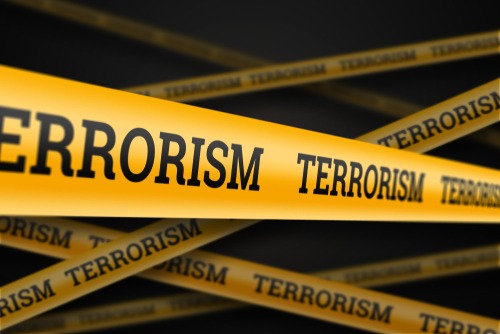
According to the latest National Terrorism Advisory System (NTAS) Bulletin from the U.S. Department of Homeland Security (DHS), threat levels throughout the country remain heightened due to mis-, dis-, and mal-information, stoked by foreign and domestic sources.
While much focus has been paid to the attack on the U.S. Capitol more than a year ago, 2021 also saw its share of mass shootings, anti-mask sentiment, and growing vocal divides across the political aisle. According to FBI Director Christopher Wray last year, white supremacists are the top domestic terrorism threat for the United States, posing at least as much threat as ISIS once did abroad.
In the fifth DHS bulletin since January 2021, the department noted that the conditions underlying the heightened threat landscape of the country have little changed, but their effects are growing.
“DHS remains committed to proactively sharing timely information and intelligence about the evolving threat environment with the American public,” DHS Secretary Alejandro Mayorkas said. “We also remain committed to working with our partners across every level of government and in the private sector to prevent all forms of terrorism and targeted violence and to support law enforcement efforts to keep our communities safe. This NTAS Bulletin outlines the key factors that have increased the volatility, unpredictability, and complexity of the current threat environment and highlights resources for individuals and communities to stay safe.”
Spurring the troubles are, according to DHS, three things overall:
- The proliferation of false or misleading narratives that have undermined trust in U.S. government institutions and sow societal discord
- Calls for violence against U.S. critical infrastructure, religious institutions, mass gatherings, government facilities and personnel, the media, and perceived ideological opponents
- Increasing calls for attacks on the United States, based on recent events, by foreign terrorist organizations
The more unrest spurred, the more potential for people to be inspired to acts of violence, DHS warned. Often, this can be reflected in lone offenders and small groups alike, either pushing ideological beliefs or pursuing personal grievances – and they pose as much a threat as anything.
“It is not lost on me that the timing of the NTAS bulletin— in the midst of a spike in bomb threats that have terrorized HBCUs and others—underscores the complex, diffused, and dynamic nature of the threats we face today,” U.S. Rep. Bennie Thompson (D-MS), chairman of the House Committee on Homeland Security, said. “Notably, the bulletin acknowledges that ‘threats directed at Historically Black Colleges and Universities (HBCUs) and other colleges and universities, Jewish facilities, and churches cause concern and may inspire extremist threat actors to mobilize to violence.’ We must stay vigilant and redouble our efforts to help at-risk facilities bolster security through the Nonprofit Security Grant Program.”
DHS and the FBI noted that they continue to share information and intelligence with governmental partners and the private sector to combat these threats. This includes an increased focus on domestic terrorism, including the first-ever National Strategy for Countering Domestic Terrorism, and broadened efforts by the Cybersecurity and Infrastructure Security Agency (CISA) to help critical infrastructure owners and operators defend against devastating cyber attacks.
The new NTAS Bulletin is in effect until June 7, 2022.




